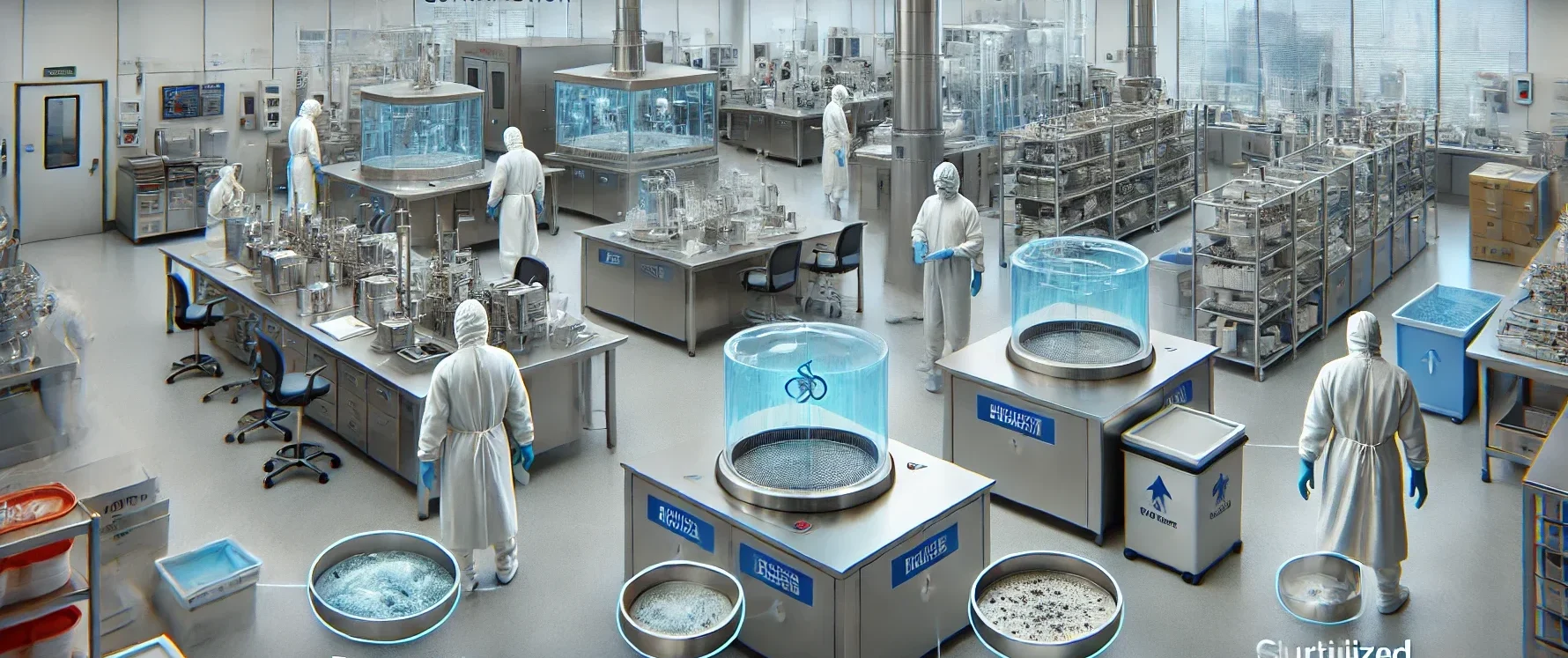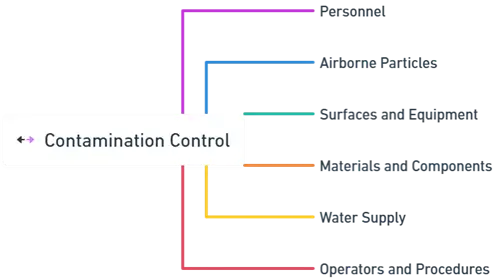Sources of contamination in an aseptic area include personnel, air, equipment, and materials, which can be prevented through proper gowning, HEPA filtration, sterilization, and strict aseptic protocols.
Personnel:
- Contaminants: Skin flakes, hair, respiratory droplets, clothing fibers.
-
Prevention:
- Strict gowning protocols (e.g., gloves, masks, gowns).
- Personnel training on aseptic techniques.
- Regular health checks and hygiene practices.
Airborne Particles:
- Contaminants: Dust, microbial spores, particulate matter.
-
Prevention:
- HEPA filtration in HVAC systems.
- Maintaining positive pressure in cleanrooms.
- Regular air quality monitoring.
Surfaces and Equipment:
- Contaminants: Residual product, cleaning agents, microbial contamination.
-
Prevention:
- Use of non-porous, easy-to-clean materials.
- Regular cleaning and disinfection schedules.
- Validated cleaning protocols.
Materials and Components:
- Contaminants: Contaminated raw materials, packaging, and tools.
-
Prevention:
- Sterilization of incoming materials.
- Proper storage in clean, controlled environments.
- Use of sterile transfer techniques.
Water Supply:
- Contaminants: Microbial contamination, endotoxins, particulates.
-
Prevention:
- Use of purified water systems.
- Regular monitoring and maintenance of water systems.
- Filtration and sterilization processes.
Operators and Procedures:
- Contaminants: Procedural errors, inadequate training.
-
Prevention:
- Comprehensive training programs.
- Standard operating procedures (SOPs).
- Continuous monitoring and feedback.


